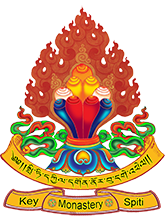The Guitor Religious Ceremony
The Guitor observance, a revered rite in the Tibetan Buddhist tradition, takes place in the sacred month of June or July. During this ceremony, the Chaam dancers don masks resembling divine entities and perform ancient movements, all while chanting powerful mantras to expel malevolent spirits.
Following the spiritual procession led by the Chaam dancers and revered lamas, the congregation gathers at a ritual site where a remarkable butter sculpture of a demon is set ablaze. This symbolic act represents the triumph of virtue over vice, a central theme in Buddhist doctrine.
The Kalachakra ritual, conducted in the presence of His Holiness the 14th Dalai Lama, Tenzin Gyatso, was a particularly significant event in the year 2000.
The upcoming Guitor Religious ceremony, to be held on 4th and 5th July 2024, promises to be a cherished occasion for practitioners of the Tibetan Buddhist faith.


The Guitor Religious Ceremony
The Guitor observance, a revered rite in the Buddhist tradition, takes place in the sacred month of June or July. During this ceremony, the Chaam dancers don masks resembling divine entities and perform ancient movements, all while chanting powerful mantras to expel malevolent spirits.
Following the spiritual procession led by the Chaam dancers and revered lamas, the congregation gathers at a ritual site where a remarkable butter sculpture of a demon is set ablaze. This symbolic act represents the triumph of virtue over vice, a central theme in Buddhist doctrine.
The Kalachakra ritual, conducted in the presence of His Holiness the 14th Dalai Lama, Tenzin Gyatso, was a particularly significant event in the year 2000.
The upcoming Guitor Religious ceremony, to be held on the 4th and 5th of July 2024, promises to be a cherished occasion for practitioners of the Buddhist faith.
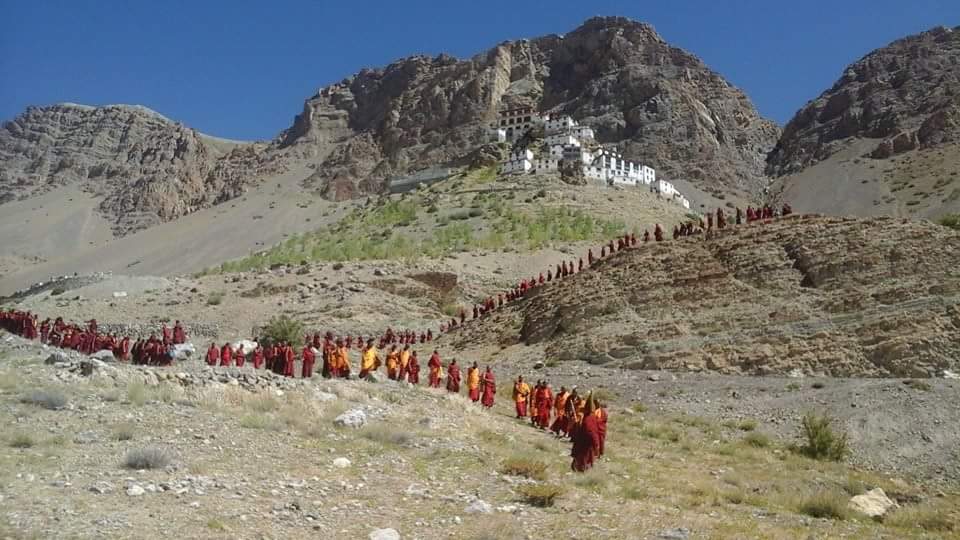
Yenne Gaaye
The Yenne Gaaye (Khetal) celebration, a much-anticipated event of the year, is a time of great joy and spiritual significance. This hallowed ceremony extends over several days, marked by the arrival of 200 monks from the monastery, who undertake a sacred mission to bless and pray for every home in the neighbouring villages. The solemn rituals performed during the Yenne Gaaye (Khetal) celebration are believed to bring blessings and ward off evil spirits, ensuring peace and prosperity in the community.
The upcoming ceremonies, to be held from 19 August to 2 October 2024, are a golden opportunity for devotees and visitors to partake in the sacred rituals and witness the power of faith in action.19 August to 2 October 2024.
Buddha’s Descent from Tushita Heaven
The twenty-second day of the Ninth month of the Tibetan calendar is a sacred day. It is the celebration of the Buddha’s descent from Tushita heaven. Buddha’s mother, Maya Deva, was reborn in Indra’s heaven after she died. To repay her kindness and to liberate her, and also to benefit the gods in heaven, Buddha ascended to heaven where he preached before the divine congregation, including his mother, for three months. Then the Buddha’s close disciple Maudgalyayana begged that they return to Earth, which they did, descending upon Sankasya where the Buddha then imparted the teachings to a large assembly of people. The next celebration will be held on 22 November 2024.
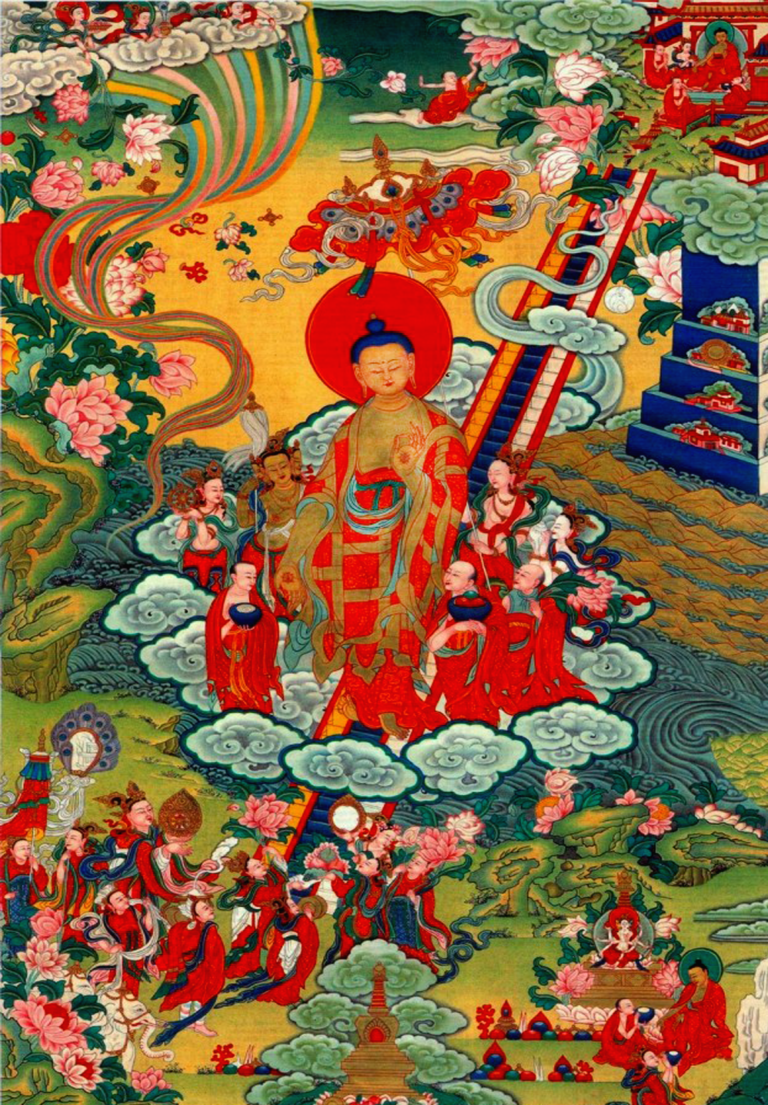
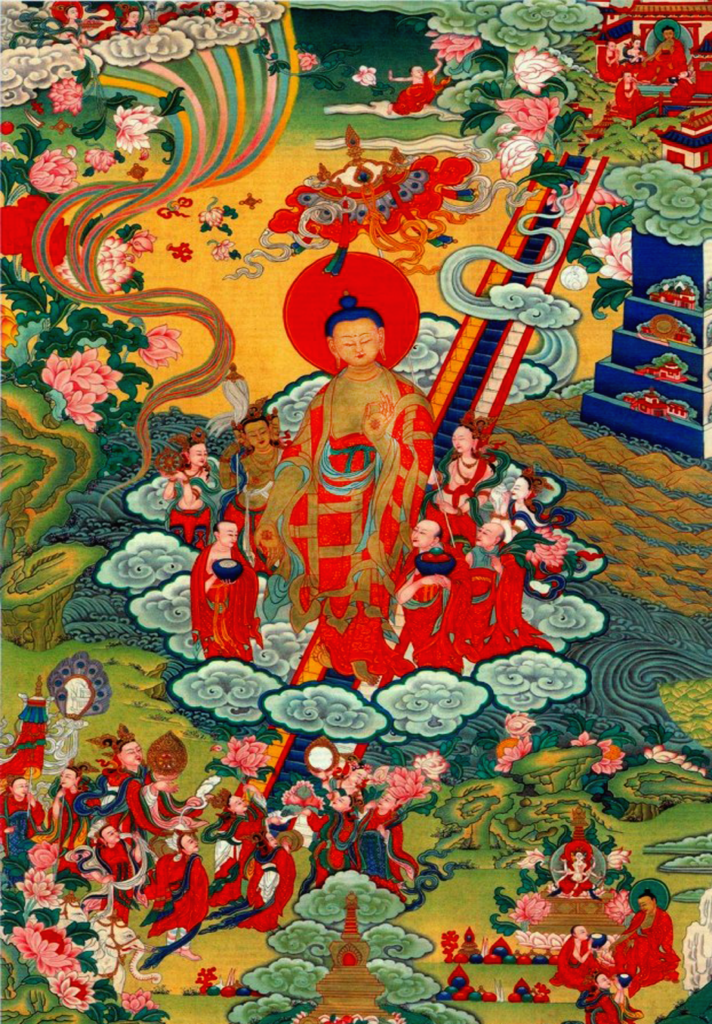
Buddha’s Descend from Tushita Heaven
The twenty-second day of the Ninth month of the Tibetan calendar is a sacred day. It is the celebration of the Buddha’s descent from Tushita heaven. Buddha’s mother, Maya Deva, was reborn in Indra’s heaven after she died. To repay her kindness and to liberate her, and also to benefit the gods in heaven, Buddha ascended to heaven where he preached before the divine congregation, including his mother, for three months. Then the Buddha’s close disciple Maudgalyayana begged that they return to Earth, which they did, descending upon Sankasya where the Buddha then imparted the teachings to a large assembly of people. The next celebration will be held on 22 November 2024.
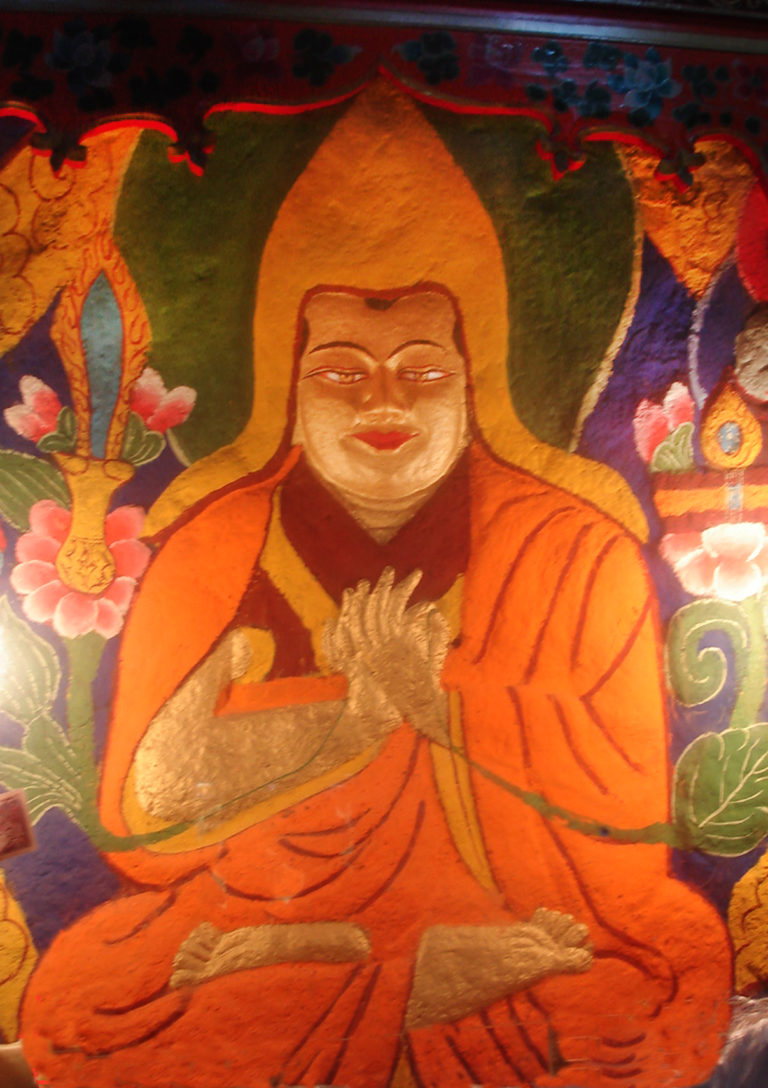
Lama Tsongkhapa Day
Lama Tsongkhapa Day, or Ganden Ngamchoe, is a celebration of the anniversary of Lama Tsongkhapa’s Parinirvana. It is celebrated on the 25th day of the 10th month in the Tibetan calendar. Lama Tsongkhapa (1357-1419) was a Tibetan Buddhist master whose studies and meditations in all the major schools of Tibetan Buddhism resulted in the founding of the Gelugpa lineageWhat is now referred to as “Tsongkhapa Day” is actually the celebration of the ‘Parinirvana’ or the enlightenment of the great Lama Tsongkhapa whose birth and enlighten activity was prophesised by the Buddha himself. In the root tantra of Manjushri, Buddha said that ‘after my teachings become diluted, you, Manjushri, will appear in the land of Snow and perform the deeds of an enlightened one’.
From the spiritual practice point of view, Tsongkhapa Day is extremely significant. Since Guru Yoga practice is the heart and soul of path towards enlightenment, the celebration acts as a reminder for all of us to engage in Guru devotion and seek the blessings of all the direct and lineage masters. On this day devotees (both lay people and monks) make expensive offerings and engage in Guru puja practices. The fundamental reason is that there are no holier objects of worship and offering than the Guru when it comes to accumulation of merit. The next celebration will be held on 25 December 2024.
Saka Dawa
Saka Dawa is one of the four holy days when we celebrate the birth, enlightenment and death (Parinirvana) of the Buddha Shakyamuni. Saka Dawa (also known as Saga Dawa) represents the holiest and most sacred days in Tibetan Buddhism. Falling on the fourth month of the Tibetan Calendar, the religious festivities of Saka Dawa peaks on the 15th Lunar Day when there is a full moon. This day is associated with three major events in the life of Shakyamuni Buddha – his birth, his enlightenment on a full moon night, and his Parinirvana.
Saka Dawa is regarded as a great time to earn merit and attain spirituality, purification and enlightenment by Tibetans. This meritorious month carries a special aspect whereby any good deeds performed during the month are rewarded with one hundred million times greater good karma. These meritorious activities revolve around early teachings of sila (morality), dana (generosity) and bhavana (meditation). Any action done during Saka Dawa is multiplied in its power. Saka Dawa is one of the four holy days when we celebrate the birth, enlightenment and death (parinirvana) of the Buddha Shakyamuni. It is a very powerful time to practice and increase one’s commitment to both practice and study. The next Saka Dawa celebration will be held from 16 to 23 May 2024.
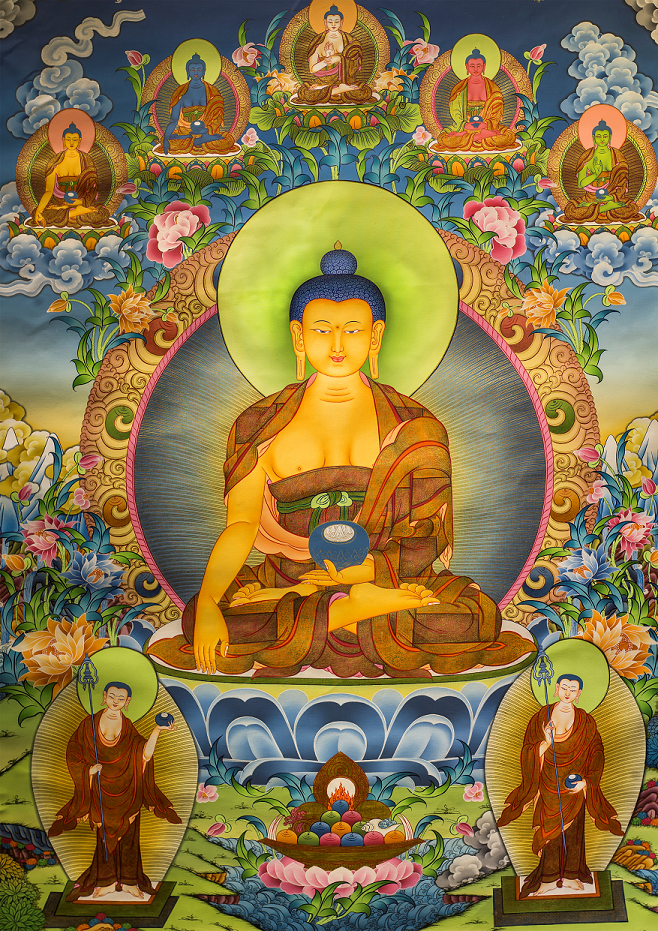

Saka Dawa
Saka Dawa is one of the four holy days when we celebrate the birth, enlightenment and death (Parinirvana) of the Buddha Shakyamuni. Saka Dawa (also known as Saga Dawa) represents the holiest and most sacred days in Tibetan Buddhism. Falling on the fourth month of the Tibetan Calendar, the religious festivities of Saka Dawa peaks on the 15th Lunar Day when there is a full moon. This day is associated with three major events in the life of Shakyamuni Buddha – his birth, his enlightenment on a full moon night, and his Parinirvana.
Saka Dawa is regarded as a great time to earn merit and attain spirituality, purification and enlightenment by Tibetans. This meritorious month carries a special aspect whereby any good deeds performed during the month are rewarded with one hundred million times greater good karma. These meritorious activities revolve around early teachings of sila (morality), dana (generosity) and bhavana (meditation). Any action done during Saka Dawa is multiplied in its power. Saka Dawa is one of the four holy days when we celebrate the birth, enlightenment and death (parinirvana) of the Buddha Shakyamuni. It is a very powerful time to practice and increase one’s commitment to both practice and study. The next Saka Dawa celebration will be held from 16 to 23 May 2024.
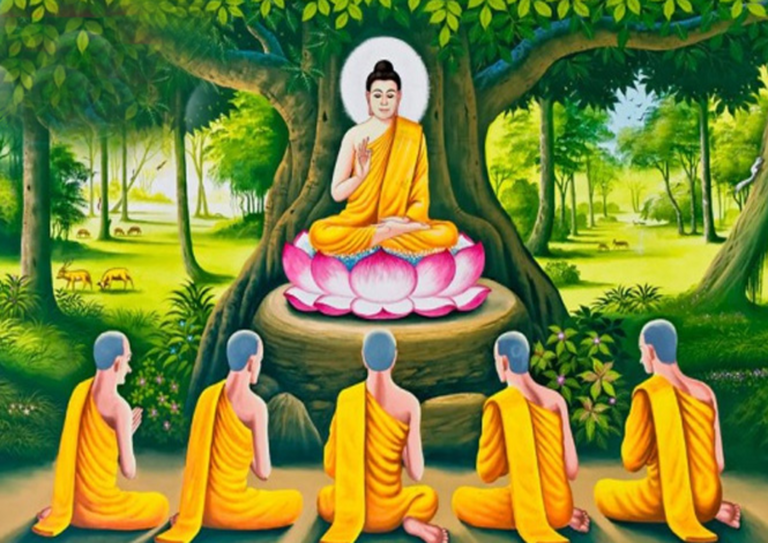
Wheel Turning Day
After the Buddha attained enlightenment under the Bodhi tree, he pondered that his realisations—his Dharma—was profound and not easy to understand, He wondered if sentient beings were actually ready for his teachings. It is said that only later at Varanasi, on the 4th day of the 6th month, did the Buddha accept the request made by the god Brahma to bestow the teachings. There he gave them the first teaching; the first turning of the Wheel of Dharma. He spoke of the Four Truths of the Aryas: True Dukkha, True Origins, True Cessations and True Paths.
Wheel Turning Day is a very auspicious occasion to engage in virtuous action.
The next Buddha’s first turning of the Dharma Wheel celebration will be held on 9 July 2024.
His Excellency Lochen Tulku Rinpoche’s Birthday
His Excellency Lochen Tulku Rinpoche is the reincarnation of Tibet’s Great Translator Rinchen Zangpo (958-1055 AD), one of that millennium’s greatest thinkers and artists. Rinchen Zangpo translated nearly a hundred Buddhist texts from Sanskrit to Tibetan, including the 16 volumes of the Prajana Pramita tantra and many others. He was a notable temple builder in the 10th century. In the Himalayan region, including Western Tibet, he built 108 temples. Since 1985, Lochen Tulku Rinpoche has been recognized as a scholar, a master of Buddhist philosophy, and a practitioner of Tantrayana Buddhism. He has tens of thousands of pupils and administers many monasteries in India’s Himalayan region.
His birthday is celebrated on the 10th of December every year.


His Excellency Lochen Tulku Rinpoche’s Birthday
His Excellency Lochen Tulku Rinpoche is the reincarnation of Tibet’s Great Translator Rinchen Zangpo (958-1055 AD), one of that millennium’s greatest thinkers and artists. Rinchen Zangpo translated nearly a hundred Buddhist texts from Sanskrit to Tibetan, including the 16 volumes of the Prajana Pramita tantra and many others. He was a notable temple builder in the 10th century. In the Himalayan region, including Western Tibet, he built 108 temples. Since 1985, Lochen Tulku Rinpoche has been recognized as a scholar, a master of Buddhist philosophy, and a practitioner of Tantrayana Buddhism. He has tens of thousands of pupils and administers many monasteries in India’s Himalayan region.
His birthday is celebrated on the 10th of December every year.
